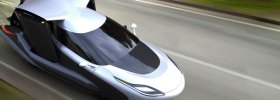By Professor Mischa Dohler & Professor Gerhard Fettweis, Fellows of the IEEE
30 October, 2014: Each Internet generation was believed to be the last, with designs pushed to near perfection. The first and original Internet, a virtually infinite network of computers, was a paradigm changer and went on to define the economies of the late 20th century. However, after that Internet came the Mobile Internet, connecting billions of smart phones and laptops, and yet again redefining entire segments of the economy in the first decade of the 21st century.
Today, we witness the emergence of the Internet of Things (IoT), shortly to connect trillions of objects and starting to redefine yet again various economies of this decade.
Is that it? Surely, so we argue, there is something much, much bigger at stake still.
These different embodiments of the Internet will be dwarfed by the emergence of the Tactile Internet which we believe is a true paradigm shift, in which sufficiently responsive, reliable network connectivity will enable it to deliver physical, tactile experiences remotely. For example, imagine delivering (possibly self-assembling) hospital equipment to the current areas of West Africa suffering from the Ebola epidemic. The best doctors and surgeons could then perform diagnosis and even surgery remotely using connected, tactile technologies.
Because the Tactile Internet will be servicing really critical aspects of society, it will need to be ultra-reliable, maybe a second of outage per year, support very low latency and short end-to-end delays in the order of milliseconds – and have sufficient capacity to allow large numbers of devices to communicate with each other simultaneously and autonomously.
We imagine the Tactile Internet will, in the business-to-business ecosystem, drive markets for autonomous cars, remote medical care markets, energy resource extraction and power generation, and other challenging industries. For consumers, it will revolutionize the way we teach, learn, and interact with our surroundings. A preliminary market analysis has revealed that the potential market could extend to US$20 trillion worldwide – around 20% of today’s worldwide GDP.
At the edges, the Tactile Internet will be enabled by the Internet of Things and actuating robots.
Content and skillset data will be transmitted over a significantly more powerful 5G core network as well as the next generation Internet. The finite speed of light, however, will require a lot of the cloud intelligence to be enabled close at the edge, close to the tactile experience.
Substantial research efforts are needed to design and connect the Tactile Internet with the traditional wired Internet, the Mobile Internet and the Internet of Things – thereby forming an Internet of entirely new dimensions and capabilities. In contrast to the prior Internets which enabled content delivery, the Tactile Internet however will be an enabler for skillset delivery – thus a very timely technology for service and skillset driven economies like the ones predominantly found in Europe.
Historically, the term Tactile Internet emerged only recently. Early purely robotic developments termed related systems “haptic computing”, but it lacked the inclusion of the next-generation networking capabilities. Ever since the IEEE Globecom 2010 tutorial on machine-to-machine technologies and the Internet of Things, Prof Mischa Dohler advocated the “closing of the data cycle” by combining real-time sensing, data delivery, big data intelligence, and application of insights through real-time actuation. Prof Gerhard Fettweis et al. then coined the term “Tactile Internet” early 2014 to reflect the evolving notions of real-time IoT and 5G mobile communications systems.
Special note about the authors:
The TU-Dresen 5G Lab Germany and the King’s College London Tactile Internet Lab aim to be at the forefront of these developments. For more information, please, contact the lead authors under Gerhard.Fettweis@vodafone-chair.com and Mischa.Dohler@kcl.ac.uk.
Mischa Dohler is full Professor in Wireless Communications at King’s College London, Head of the Centre for Telecommunications Research, co-founder and member of the Board of Directors of the smart city pioneer Worldsensing, Fellow and Distinguished Lecturer of the IEEE, and Editor-in-Chief of the Transactions on Emerging Telecommunications Technologies.
He is a frequent keynote, panel and tutorial speaker. He has pioneered several research fields, contributed to numerous wireless broadband and IoT/M2M standards, holds a dozen patents, organized and chaired numerous conferences, has more than 200 publications, and authored several books. He has a citation h-index of 38 (top 1%).
He acts as policy, technology and entrepreneurship adviser, examples being Richard Branson’s Carbon War Room, the House of Lords UK, the EPSRC ICT Strategy Advisory Team, the European Commission, the ISO Smart City working group, and various start-ups. He is also an entrepreneur, angel investor, passionate pianist and fluent in 6 languages. He has talked at TEDx. He had coverage by national and international TV & radio; and his contributions have featured on BBC News and the Wall Street Journal.
Gerhard Fettweis earned his Ph.D. under H. Meyr’s supervision from RWTH Aachen in 1990. After one year at IBM Research in San Jose, CA he moved to TCSI Inc., Berkeley, CA. Since 1994 he is Vodafone Chair Professor at TU Dresden, Germany, with currently 20 companies from Asia/Europe/US sponsoring his research on wireless transmission and chip design. He coordinates 2 DFG centers at TU Dresden, cfAED and HAEC. Gerhard is IEEE Fellow, member of acatech, has an honorary doctorate from TU Tampere, and has received multiple awards.
In Dresden he has spun-out ten start-ups, and setup funded projects of more than EUR 1/3 billion volume. He has helped organizing IEEE conferences, most notably as TPC Chair of IEEE ICC 2009, IEEE TTM 2012, and General Chair of VTC Spring 2013. He remains active within IEEE.
![[Guest Post] The tactile internet – IoT, 5G and cloud on steroids](https://en.blogthinkbig.com/wp-content/uploads/sites/5/2014/10/shutterstock_187662974.jpg?resize=610%2C225)








